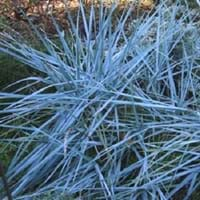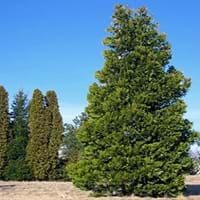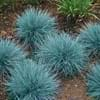Life Span
Perennial
Annual and Perennial
Origin
Europe, Western Asia
Western United States, California, Mexico
Types
Blue Dune Lyme Grass
Not Available
Habitat
Clay soil areas, Loamy soils, Sandy areas, sandy seeps, Well Drained
low mountains, Mountain tops, Subtropical climates, Temperate Regions
USDA Hardiness Zone
7-9
5-8
Sunset Zone
Not Available
1a, 1b, 2a, 2b, 3a, 3b, 4, 5, 6, 7, 8, 9, 10, 11, 12, 14, 15, 16, 17, 18, 19, 20, 21, 22, 23, 24
Habit
Spreading
Upright/Erect
Flower Color
Creamy Yellow
Non Flowering Plant
Flower Color Modifier
Bicolor
Bicolor
Fruit Color
Not Available
Sandy Brown
Leaf Color in Spring
Blue Green, Gray Green
Green
Leaf Color in Summer
Light Green
Green
Leaf Color in Fall
Blue Green, Gray Green
Green
Leaf Color in Winter
Tan
Green
Leaf Shape
Grass like
Pinnate
Plant Season
Summer, Fall, Winter
Spring, Summer, Fall, Winter
Sunlight
Full Sun, Partial Sun, Partial shade
Full Sun, Partial Sun
Type of Soil
Clay, Loam, Sand
Loam, Sand
The pH of Soil
Acidic, Neutral, Alkaline
Acidic, Neutral
Soil Drainage
Well drained
Well drained
Bloom Time
Early Summer, Summer
Not Available
Tolerances
Wet Site, Pollution, Drought, Soil Compaction
Drought
Where to Plant?
Container, Ground, Pot
Ground
How to Plant?
Root Division, Rooted stem cutting, Seedlings
Stem Planting
Plant Maintenance
Medium
Medium
Watering Requirements
Average Water Needs, occasional watering once established
Needs less watering, Water occasionally
In Summer
Lots of watering
Lots of watering
In Spring
Moderate
Moderate
In Winter
Average Water
Average Water
Soil pH
Acidic, Neutral, Alkaline
Acidic, Neutral
Soil Type
Clay, Loam, Sand
Loam, Sand
Soil Drainage Capacity
Well drained
Well drained
Sun Exposure
Full Sun, Partial Sun, Partial shade
Full Sun, Partial Sun
Pruning
No pruning needed in the early stages, Prune grass to maintain level
Prune if you want to improve plant shape, Remove damaged leaves, Remove dead branches, Remove dead leaves
Fertilizers
All-Purpose Liquid Fertilizer, fertilize in spring
No fertilizers needed
Pests and Diseases
Red blotch
Insects
Plant Tolerance
Drought, Pollution, Soil Compaction, Wet Site
Drought
Flowers
Insignificant
None
Flower Petal Number
Single
Not Available
Fragrant Bark/Stem
No
Yes
Foliage Texture
Coarse
Medium
Foliage Sheen
Matte
Matte
Attracts
Butterflies
Birds
Allergy
Pollen
no allergic reactions
Aesthetic Uses
Ground Cover, Landscape Designing
Showy Purposes
Beauty Benefits
Not Available
Not Available
Edible Uses
Insignificant
No
Environmental Uses
Air purification, soil erosion prevension on hill slopes, soil stabilisation
Air purification
Medicinal Uses
Not Available
Stomach pain
Part of Plant Used
Stem
Bark, Leaves
Other Uses
Used as Ornamental plant
Making Perfumes, Used in pencil industry
Used As Indoor Plant
No
No
Used As Outdoor Plant
Yes
Yes
Garden Design
Dried Flower/Everlasting, Groundcover
Screening / Wind Break, Shade Trees, Street Trees
Botanical Name
ELYMUS glaucus
CALOCEDRUS decurrens
Common Name
Blue Lyme Grass, Blue Wildrye
Incense Cedar
In Hindi
Blue Lyme Grass
Incense Cedar
In German
Blau Lyme Grass
Zeder
In French
Bleu Lyme Herbe
Encens Cedar
In Spanish
Azul hierba de Lyme
cedro de incienso
In Greek
Μπλε Lyme Grass
θυμίαμα Κέδρος
In Portuguese
Azul Lyme grama
cedro de incenso
In Polish
Niebieska Trawa Lyme
kadzidło Cedar
In Latin
Blue Lyme Grass
incensum Cedar
Phylum
Magnoliophyta
Tracheophyta
Class
Liliopsida
Pinopsida
Family
Poaceae
Cupressaceae
Clade
Angiosperms, Commelinids, Monocots
Not Available
Tribe
Triticeae
Not Available
Subfamily
Pooideae
Not Available
Number of Species
Not Available
Not Available
Season and Care of Blue Lyme Grass and Incense Cedar
Season and care of Blue Lyme Grass and Incense Cedar is important to know. While considering everything about Blue Lyme Grass and Incense Cedar Care, growing season is an essential factor. Blue Lyme Grass season is Summer, Fall and Winter and Incense Cedar season is Summer, Fall and Winter. The type of soil for Blue Lyme Grass is Clay, Loam, Sand and for Incense Cedar is Loam, Sand while the PH of soil for Blue Lyme Grass is Acidic, Neutral, Alkaline and for Incense Cedar is Acidic, Neutral.
Blue Lyme Grass and Incense Cedar Physical Information
Blue Lyme Grass and Incense Cedar physical information is very important for comparison. Blue Lyme Grass height is 150.00 cm and width 75.00 cm whereas Incense Cedar height is 2,130.00 cm and width 180.00 cm. The color specification of Blue Lyme Grass and Incense Cedar are as follows:
Blue Lyme Grass flower color: Creamy Yellow
Blue Lyme Grass leaf color: Blue Green and Gray Green
Incense Cedar flower color: Non Flowering Plant
- Incense Cedar leaf color: Green
Care of Blue Lyme Grass and Incense Cedar
Care of Blue Lyme Grass and Incense Cedar include pruning, fertilizers, watering etc. Blue Lyme Grass pruning is done No pruning needed in the early stages and Prune grass to maintain level and Incense Cedar pruning is done Prune if you want to improve plant shape, Remove damaged leaves, Remove dead branches and Remove dead leaves. In summer Blue Lyme Grass needs Lots of watering and in winter, it needs Average Water. Whereas, in summer Incense Cedar needs Lots of watering and in winter, it needs Average Water.





